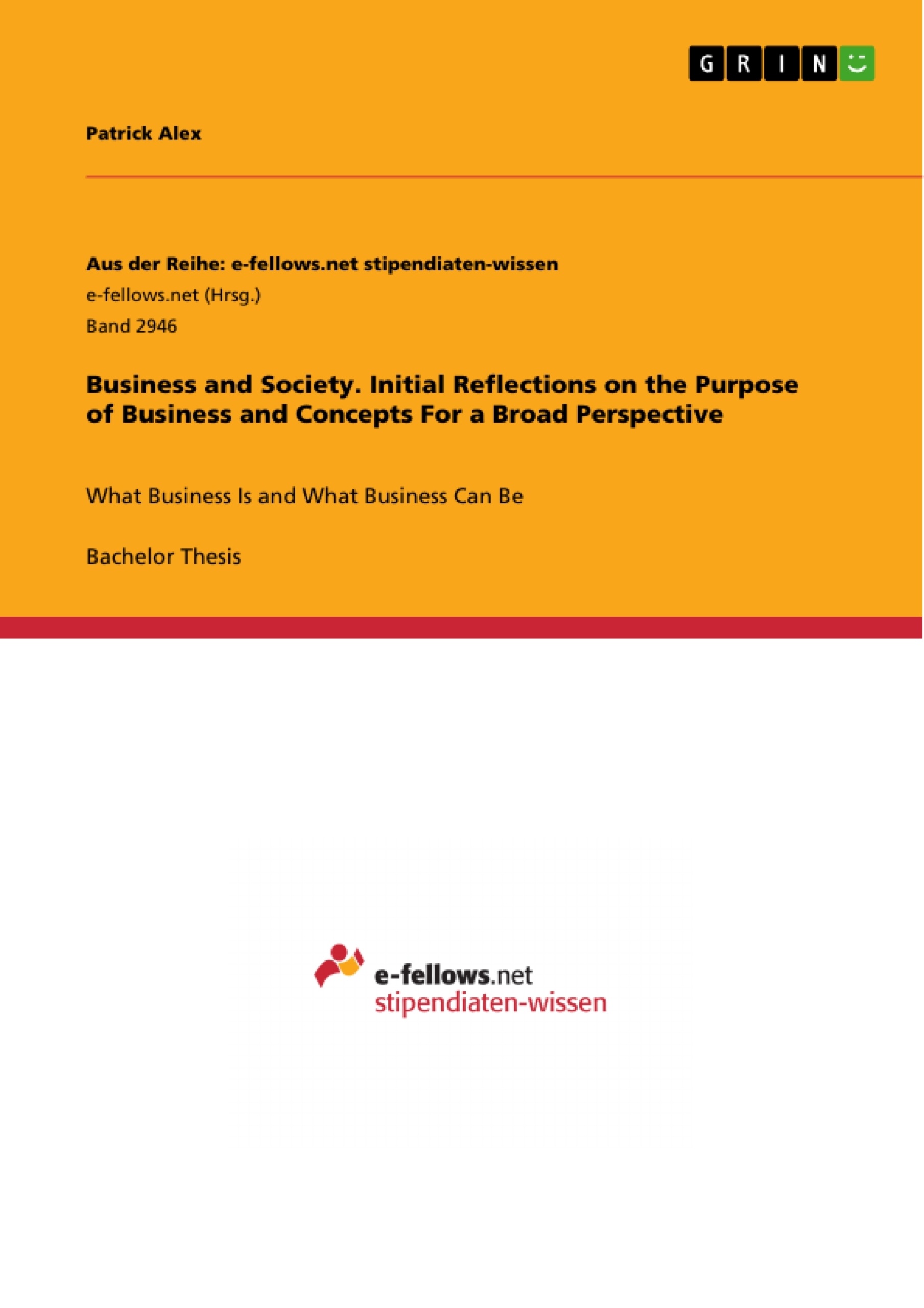This bachelor thesis evaluates the very purpose of the existence of business in society. Starting with the conventional motives of profit maximisation and shareholder value for its destined owners, the argument expands towards a broad perspective of business arguing that profit maximisation is not the (sole) purpose of business existence.
The argument is made by looking in conjunction at stakeholder theory and sustainable operations of the firm, stressing that business operations not only out of instrumental, but also normative reasons should incorporate a broad perspective. Evaluating the two different perspectives it is argued that they can be integrated into a concept not compromising each other, but complementing one another and generating shared value for business and society at large.
Taking recent scandals aside, it is fairly surprising that business is seen overly negative in public opinion. Businesses have communicated strongly that profit maximisation is not their sole purpose of operations. Nevertheless, the negative notion towards business persists, stressing the concern that there might be a deeper alienation between business and society at play. This is the starting point for the following analysis. The thesis puts the corporation at its very centre of argumentation intending to shift away from reactionary behaviour created by external pressure, but focusing on the core of business operations, evaluating, how business can deliver superior value for society without compromising the bottom line.
Inhaltsverzeichnis (Table of Contents)
- Introduction
- Perception of business in society
- Methodology and structure of the thesis
- Reflections on the purpose of business
- Assessments about the purpose of business
- Narrow and broad perspective of business
- Arguments for a narrow perspective of business
- Arguments for a broad perspective of business
- Discussion of both perspectives and their synergic relationship
- Concepts for a broad perspective of business
- Overview of concepts
- Focus on the concept of Creating Shared Value
- Evaluation of Creating Shared Value
- Evaluation criteria
- Business examples for evaluation of Creating Shared Value
- Competitive advantage on the basis of Creating Shared Value
Zielsetzung und Themenschwerpunkte (Objectives and Key Themes)
This bachelor thesis explores the fundamental purpose of business in society. Examining both traditional motivations such as profit maximization and shareholder value, it argues for a broader perspective that emphasizes the importance of considering stakeholder interests and sustainable operations. The thesis explores the relationship between these contrasting views, proposing a framework for integrating them into a concept that benefits both business and society.- The purpose of business
- Stakeholder theory
- Sustainable business operations
- Creating Shared Value
- Integration of different business perspectives
Zusammenfassung der Kapitel (Chapter Summaries)
- Introduction: This chapter introduces the thesis, outlining the scope and purpose of the research. It discusses the perception of business in society and the methodology used in the thesis.
- Reflections on the purpose of business: This chapter examines the different perspectives on the purpose of business, exploring both narrow and broad perspectives. It presents arguments for both profit maximization and shareholder value, as well as for considering stakeholder interests and sustainable operations.
- Concepts for a broad perspective of business: This chapter presents different concepts for a broad perspective of business, focusing specifically on the concept of Creating Shared Value. It discusses the evaluation criteria for this concept and examines its applicability and potential through business examples.
Schlüsselwörter (Keywords)
The thesis focuses on the purpose of business, stakeholder theory, sustainable operations, creating shared value, profit maximization, shareholder value, and the integration of different business perspectives. These keywords reflect the core concepts and themes explored in the research.- Quote paper
- Patrick Alex (Author), 2015, Business and Society. Initial Reflections on the Purpose of Business and Concepts For a Broad Perspective, Munich, GRIN Verlag, https://www.grin.com/document/448608



